Key takeaways
- Disaster preparedness plans are crucial for effective communication and readiness during emergencies, helping to minimize chaos and ensure clear roles.
- Radio broadcasting serves as a vital source of information in crises, staying operational when other technologies fail, thereby providing communities with essential updates.
- Regular drills and clear delegation of responsibilities are key to successful implementation of disaster plans, enhancing team coordination under pressure.
- Flexibility in plans is essential, as emergencies can evolve unpredictably, requiring quick adaptations to maintain effective operations.
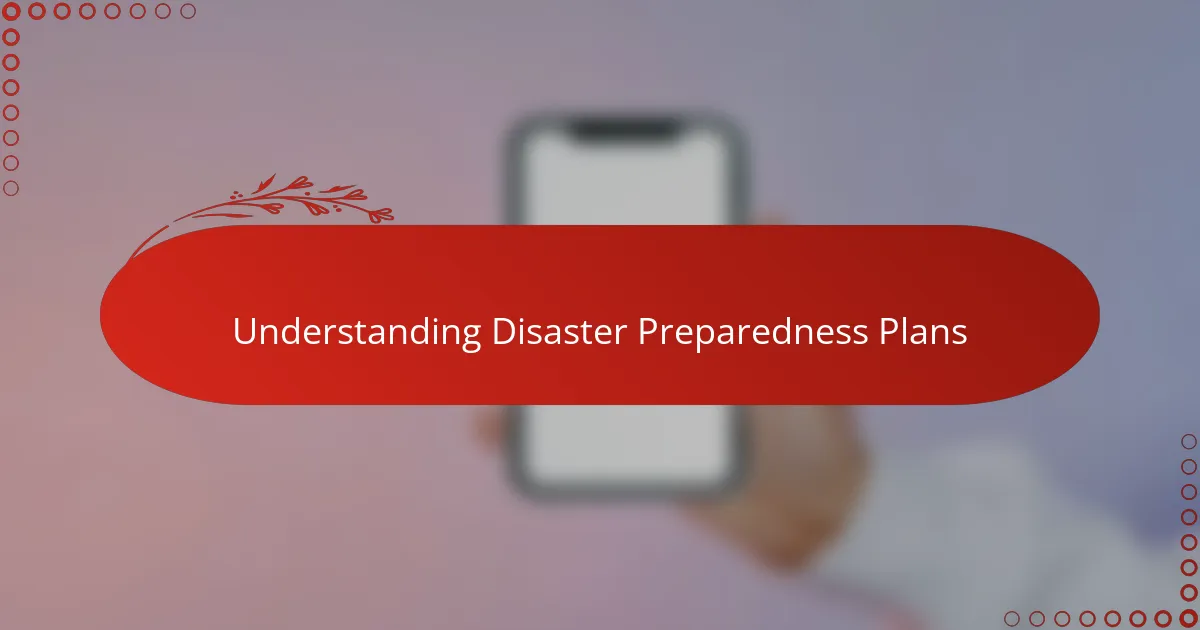
Understanding Disaster Preparedness Plans
Disaster preparedness plans, in my experience, are more than just documents filled with instructions—they’re lifelines that can mean the difference between chaos and control during emergencies. When I first encountered such a plan in a radio station, I realized how essential it was to have clear roles and communication strategies mapped out beforehand. Have you ever thought about how a simple misstep in communication could disrupt a whole broadcast during a crisis?
I remember feeling a rush of reassurance knowing there was a structured response ready to kick in. These plans break down complex situations into manageable steps, helping teams stay focused rather than overwhelmed. It’s fascinating how much thought goes into anticipating every possible scenario, from equipment failure to natural disasters, especially in the fast-paced world of radio broadcasting.
What struck me most was how understanding these plans cultivates a mindset of readiness. It’s not just about reacting but being proactive—asking, “What if this happens?” and preparing accordingly. That kind of foresight creates confidence, which I believe is invaluable when unpredictable events threaten to disrupt everything.
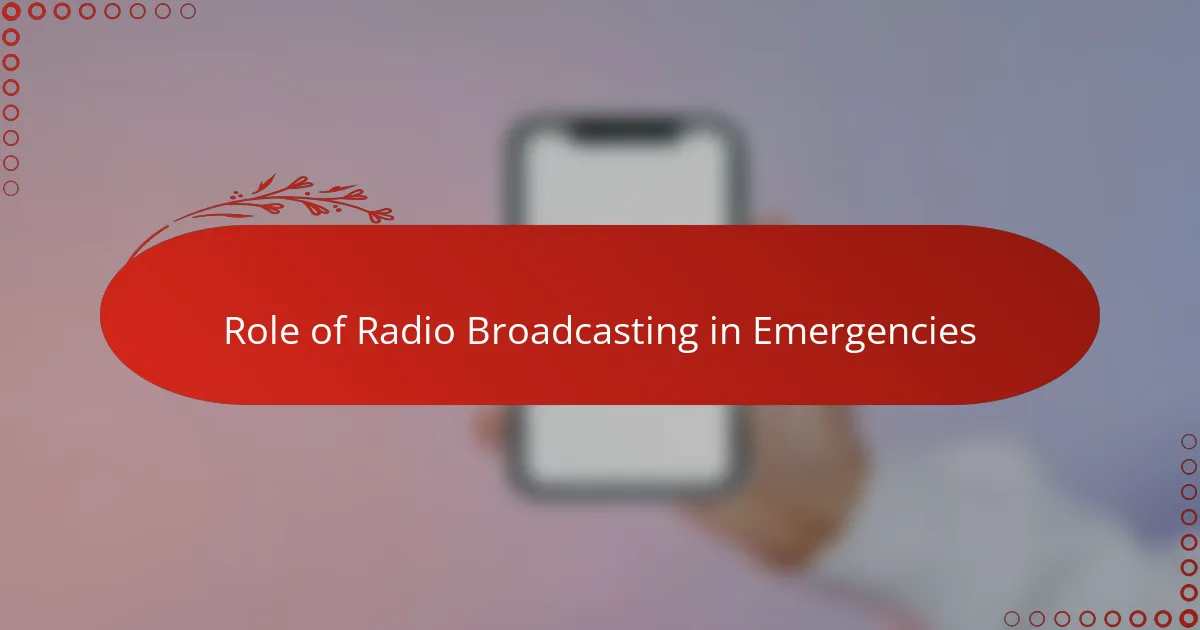
Role of Radio Broadcasting in Emergencies
When emergencies strike, radio broadcasting becomes much more than just entertainment—it turns into a critical source of trusted information. I’ve seen firsthand how a well-prepared radio station can keep communities connected, providing timely updates that help people make life-saving decisions. Isn’t it incredible how the simple act of tuning into the right frequency can offer comfort amid uncertainty?
During a severe storm once, I remember the power going out almost everywhere, except the radio station which stayed on air. That moment really hit me: radio doesn’t rely on the internet or cell towers alone, making it incredibly resilient when other technologies fail. It was humbling to realize that our broadcasts became the voice of calm for so many.
Have you ever wondered how radio professionals prepare for these high-pressure moments? From scripted alerts to rapid coordination with emergency services, the behind-the-scenes effort is immense. Those hours of training and planning suddenly feel worth every second when the community depends on your words to stay safe.
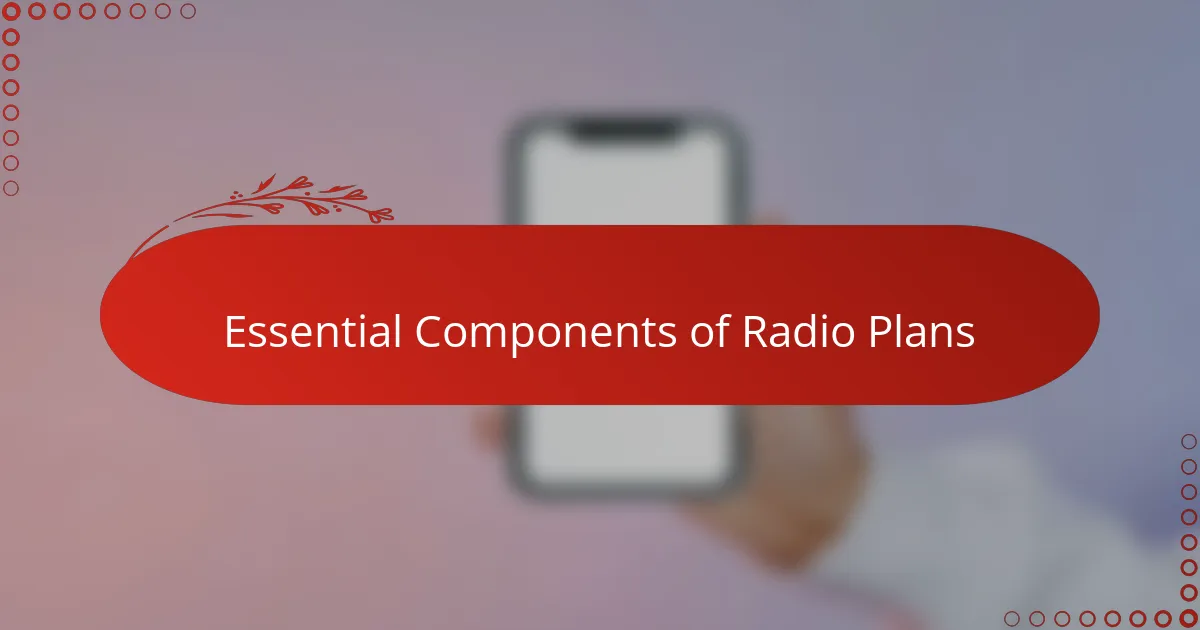
Essential Components of Radio Plans
One essential component I quickly learned in radio disaster plans is the clarity of communication protocols. When every second counts, knowing exactly who speaks, when, and what message to relay prevents confusion and misinformation. Have you ever experienced a broadcast where messages got tangled? That feeling of chaos is exactly what these plans aim to eliminate.
Another vital piece is the backup power and equipment strategy. I still recall the panic when the main power failed during a drill—thankfully, the emergency generator kicked in seamlessly. This redundancy isn’t just a technical detail; it’s a crucial lifeline that ensures the station stays on air when the community needs it most.
Finally, the human element stands out: roles and responsibilities must be clearly assigned and rehearsed. It’s one thing to have a plan on paper, but when the signal goes live, everyone must instinctively know their part. That confidence comes from practice, and I’ve seen how well-prepared teams perform like a finely tuned orchestra under pressure. Isn’t that kind of teamwork inspiring?
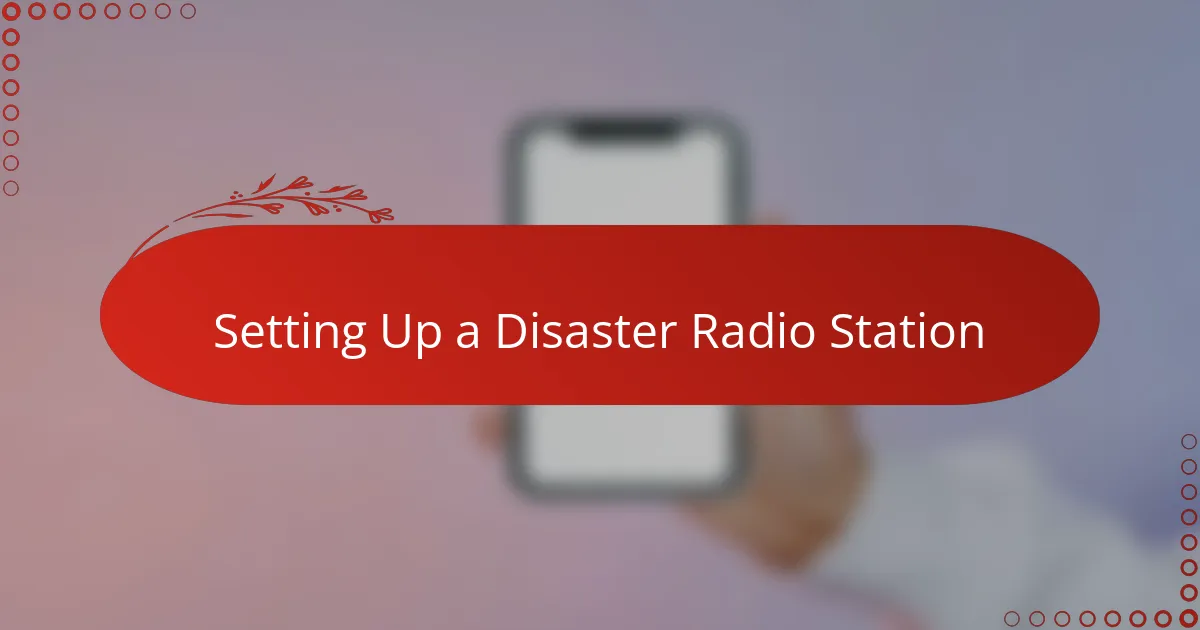
Setting Up a Disaster Radio Station
Setting up a disaster radio station isn’t just about plugging in equipment; it’s about building a lifeline for communities when everything else goes dark. I remember the first time I helped set one up—it felt like assembling a puzzle where every piece mattered, from antennas to backup power sources. Have you ever thought about how a single technical glitch could silence a whole region during an emergency?
One critical step I learned was choosing the right location for the station—somewhere secure and accessible even when roads are blocked or flooding occurs. It was a challenge, but ensuring the station could operate continuously gave me real peace of mind. The hum of that generator kicking in during a simulated blackout remains one of the most reassuring sounds I’ve ever heard in this line of work.
Then there’s the human factor: assembling a team that knows their roles inside and out transforms the station from a mere transmitter into a beacon of hope. During a test run, I watched as everyone fell effortlessly into their parts, seamlessly coordinating messages and technical checks. It made me realize that technology alone isn’t enough; it’s the people behind the mic and buttons who truly keep the airwaves alive when disaster strikes.
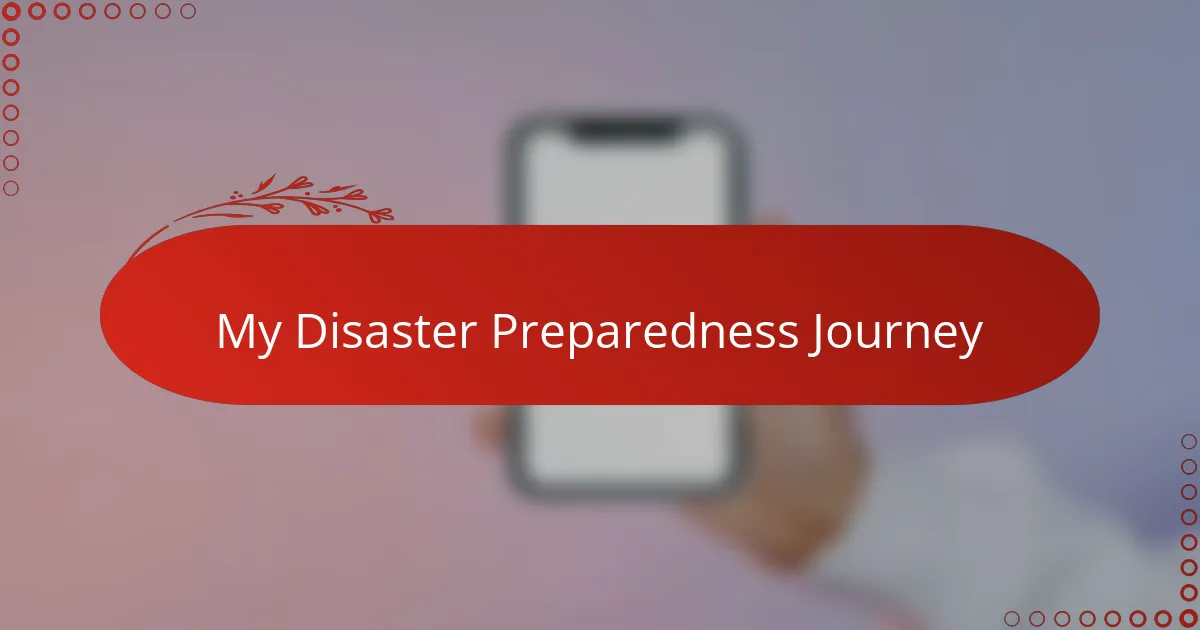
My Disaster Preparedness Journey
My disaster preparedness journey began somewhat unexpectedly when I was thrust into coordinating emergency broadcasts during a flash flood warning. I remember the adrenaline rush mixed with a deep sense of responsibility—would our plan hold up under pressure? That moment taught me the true weight of being ready, beyond just ticking off checklists.
Over time, I discovered that preparedness is as much about mindset as it is about procedures. Every drill, every review made me appreciate how vital it is to anticipate pitfalls before they happen. Have you ever felt that quiet confidence just before a live broadcast? That’s the feeling preparedness instills, and it’s priceless when lives depend on what we share over the airwaves.
Looking back, I realize my journey was about building trust with my team and the community we serve. Knowing that our voices could guide people safely through chaos made every hour spent refining those plans deeply meaningful. It isn’t just technical readiness—it’s a commitment to being a dependable lifeline when disaster strikes.
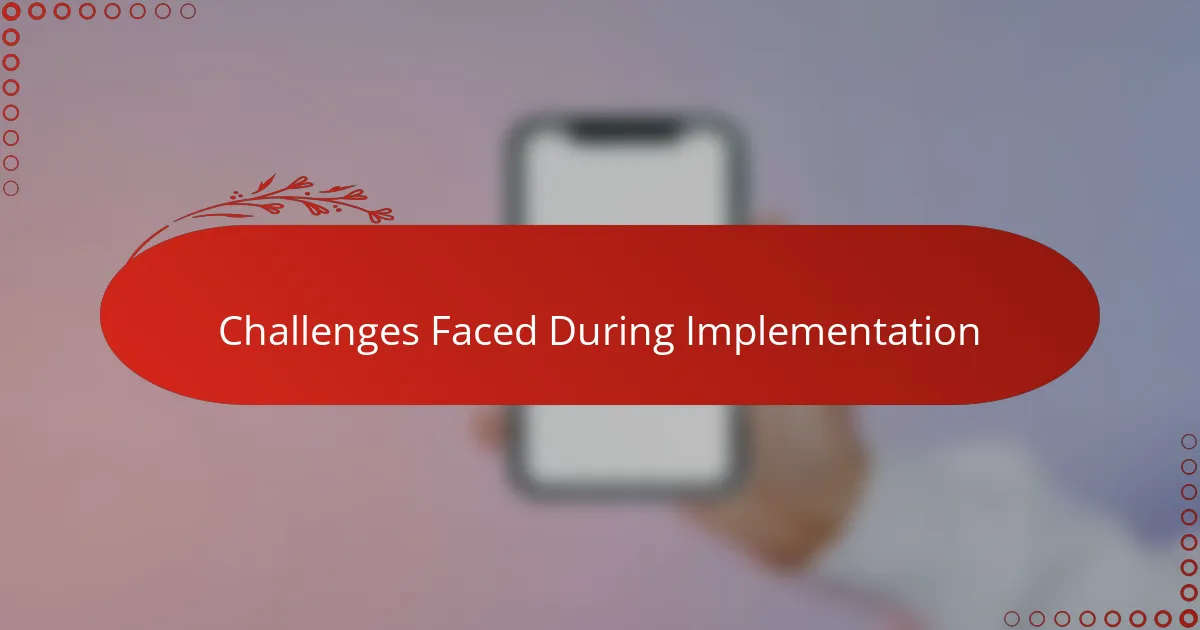
Challenges Faced During Implementation
Implementing disaster preparedness plans in a live radio environment revealed unexpected hurdles I hadn’t fully anticipated. One major challenge was coordinating a team under pressure when communication lines themselves were compromised—how do you keep everyone on the same page when the very channels you rely on begin to fail? I’ve been in situations where confusion over who should relay information caused frustrating delays, reminding me how critical clear, practiced procedures truly are.
Another challenge that stands out from my experience was balancing the technical demands with human factors. Backup power systems aren’t fail-proof, and at one point, a generator hiccup during a drill nearly took us off air. That moment was a harsh reminder that no matter how robust the equipment, real-time troubleshooting skills and calm teamwork are essential to bridging those gaps. Have you ever felt that sinking feeling when a backup solution falters just when you need it most?
Lastly, I found that keeping everyone engaged and committed to the plan took more than routine drills; it required constant reinforcement and building trust. People tend to revert to old habits under stress, and without repeated practice, roles can blur when it’s most crucial to stay sharp. I learned firsthand that disaster plans live and breathe through the people who execute them, which meant fostering a culture of readiness wasn’t just beneficial—it was vital.
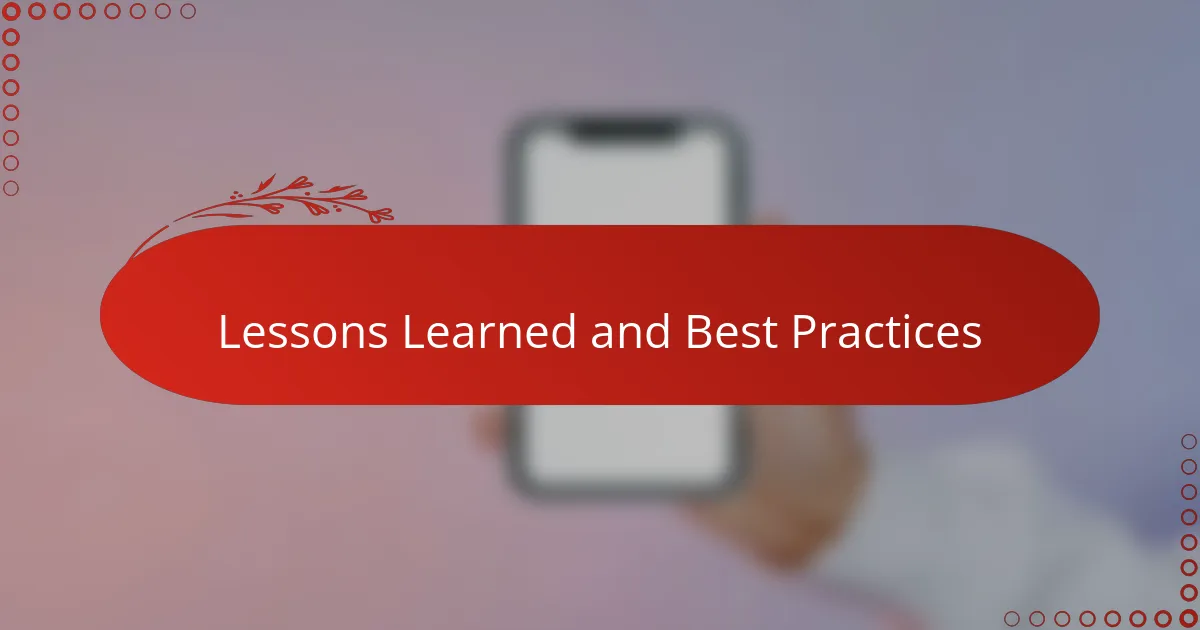
Lessons Learned and Best Practices
One lesson that stood out to me is the absolute necessity of regular, realistic drills. Without them, even the best-written plans can fall apart when the pressure mounts. I’ve seen teams stumble during live tests simply because they hadn’t rehearsed enough, which made me realize how practice is the bridge between theory and action.
Another best practice I swear by is clear delegation. When everyone knows exactly what they’re responsible for, confusion melts away. I remember a broadcast where quick communication saved the day because roles were so well defined that no one hesitated, even in the chaos of a real emergency.
Lastly, I can’t stress enough the importance of keeping plans flexible. Emergencies rarely follow a script, and rigid procedures can backfire. In one instance, adapting on the fly based on the situation’s evolution prevented a potential blackout in broadcasting, teaching me that preparedness means expecting the unexpected. Have you ever had to improvise under pressure? That’s when true resilience is tested.
